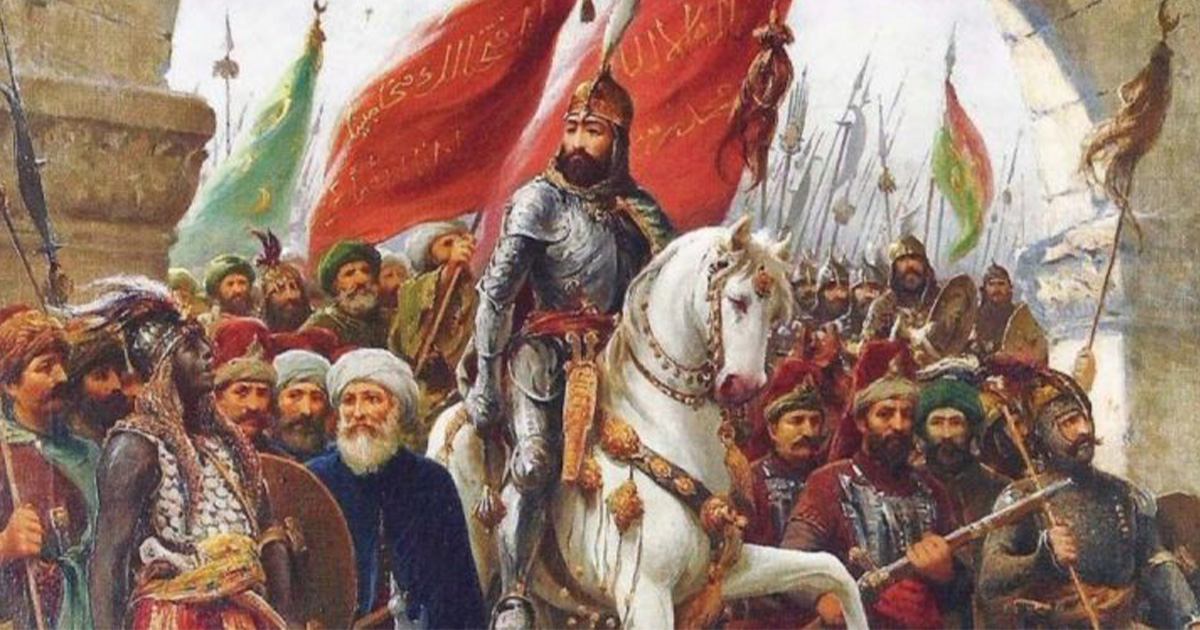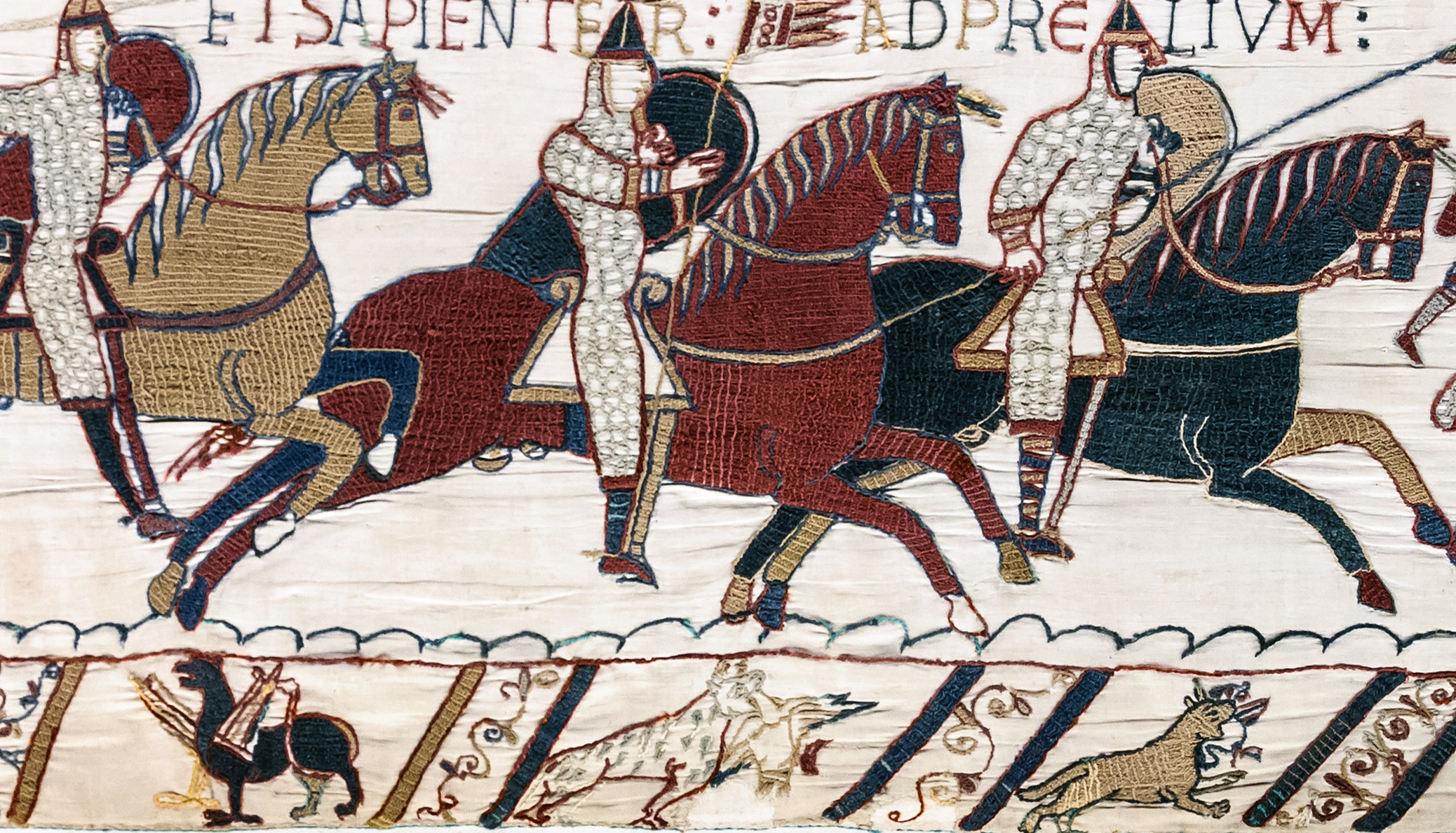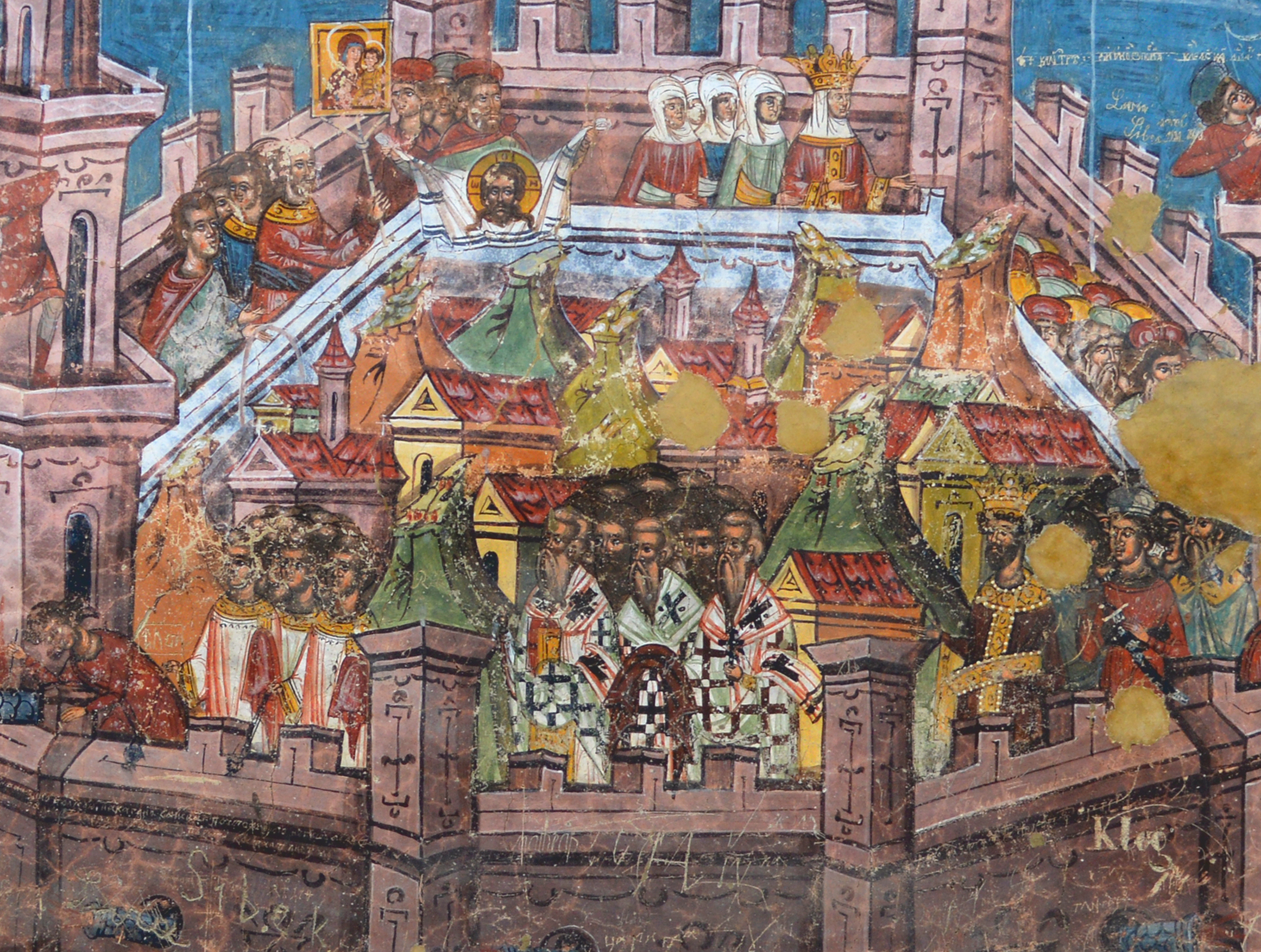Epic Skirmishes
Throughout history, monumental battles have shaped the destinies of civilizations, tipping the scales in dramatic and often unexpected ways. Think about the ancient Greeks at Marathon who basically saved democracy, or the grueling siege of Stalingrad during WWII. These aren't just fights—they're the big moments that have steered history, leaving their mark on how we live today.

Battle Of Marathon: The Dawn Of Western Civilization
The Battle of Marathon was the spark that ignited the rise of Western civilization. In 490 BC, a small band of Athenian warriors stood their ground and defeated the Persian Empire on the plains of Marathon. This victory didn’t just save Athens; it safeguarded the fledgling idea of democracy, paving the way for Greece’s golden age. Imagine a world where the Persians had won—no Socrates, no Plato, no Aristotle.
 Louvre Museum, Wikimedia Commons
Louvre Museum, Wikimedia Commons
The Decisive Defeat At Syracuse: Athenian Ambitions Crushed
In 413 BC, Athens suffered a devastating defeat during the Peloponnesian when its massive fleet, sent to conquer Syracuse, was trapped and destroyed in the Sicilian Expedition. This catastrophic failure decimated Athenian forces, leading to the capture or demise of thousands of servicemen and the annihilation of their naval power. The disaster also encouraged rebellions within the Athenian Empire and led to the renewal of hostilities by Sparta, worsening Athens' strategic position.
 Chatterton, E. Keble, Wikimedia Commons
Chatterton, E. Keble, Wikimedia Commons
The Battle Of Gaugamela: The Fall Of The Persian Empire
Alexander the Great tops the list of world conquerors, and the Battle of Gaugamela in 331 BC is his crowning achievement. Outnumbered by the vast Persian Empire, 25-year-old Alexander used brilliant tactics and sheer audacity to crush Darius III’s forces. The result? The fall of Persia and Hellenistic culture spreading across three continents. They don’t call him "the Great" for nothing!
![]() Berthold Werner, Wikimedia Commons
Berthold Werner, Wikimedia Commons
Battle Of The Metaurus: The Turning Point In Rome Vs Carthage
The Second Punic conflict was a brutal contest between Rome and Carthage, marked by numerous intense and pivotal battles. In 207 BC, the tide turned decisively at the Battle of the Metaurus when Roman forces intercepted and annihilated the reinforcements led by Hasdrubal Barca, Hannibal’s brother. This devastating defeat cut off Hannibal's crucial support, forcing him into a defensive position in southern Italy and sealing Carthage’s fate as Rome advanced toward Mediterranean dominance.
 Heinrich Leutemann, Wikimedia Commons
Heinrich Leutemann, Wikimedia Commons
Arminius' Victory At Teutoburg Forest: The End Of Roman Expansion
In 9 AD, the Roman Empire learned a tough lesson: never underestimate the locals. Arminius, a Germanic chieftain, lured three Roman legions into the dense Teutoburg Forest. What followed was a tragedy—an ambush that annihilated the Romans. This defeat didn’t just stop a campaign; it halted Rome’s expansion into Germania. The Rhine River became the Empire’s frontier, marking the boundary between two very different worlds.
 Nikater, CC BY-SA 4.0, Wikimedia Commons
Nikater, CC BY-SA 4.0, Wikimedia Commons
The Battle Of Catalaunian Plains: Roman Resistance Against The Huns
The Battle of the Catalaunian Plains in 451 AD saw Romans and Visigoths teaming up against Flagellum Dei in a massive showdown. Although the battle ended without a decisive winner, it successfully halted Attila’s advance into Roman territory. This clash is often seen as a pivotal moment, marking one of the last significant battalion engagements of the Western Roman Empire. Despite its importance, the battle's long-term impact is still debated among historians.
 Georges Rochegrosse, Wikimedia Commons
Georges Rochegrosse, Wikimedia Commons
Charles Martel And The Battle Of Tours: Halting The Arab Expansion In Europe
In 732 AD, Europe was at a crossroads. The Umayyad Caliphate had swept through North Africa and Spain, eyeing the heart of Europe. Enter Charles Martel, the "Hammer," who led the Franks at the Battle of Tours. This wasn’t just another battle—it was a fight for Europe’s soul. Martel’s victory halted the Muslim advance and preserved the Christian character of the continent.
 Bibliothèque nationale de France, Wikimedia Commons
Bibliothèque nationale de France, Wikimedia Commons
The Battle Of Hastings: The Norman Conquest Of England
The Battle of Hastings was an epic showdown on October 14, 1066, where William, Duke of Normandy, and his Norman-French army took on King Harold Godwinson’s Anglo-Saxon forces in a clash that would forever change England’s history. The battle was a grueling, day-long affair full of twists—like the Normans' clever tactic of pretending to retreat to lure the English into a trap. By the end, Harold was killed—whether by an arrow to the eye or with the sword is still up for debate—and William emerged victorious, paving the way for him to be crowned King of England on Christmas Day, 1066.

History's most fascinating stories and darkest secrets, delivered to your inbox daily.
Joan Of Arc's Siege Of Orléans: A Turning Point In The Hundred Years' War
Joan of Arc was a teenage girl who turned the tide of the Hundred Years' War. In 1429, with France on the ropes under English occupation, Joan, a peasant claiming divine guidance, inspired the French army to lift the Siege of Orleans. Her victory was more than just military—it was a morale boost that rallied France to fight back. Joan didn’t just save a city; she saved a nation and became a legend.
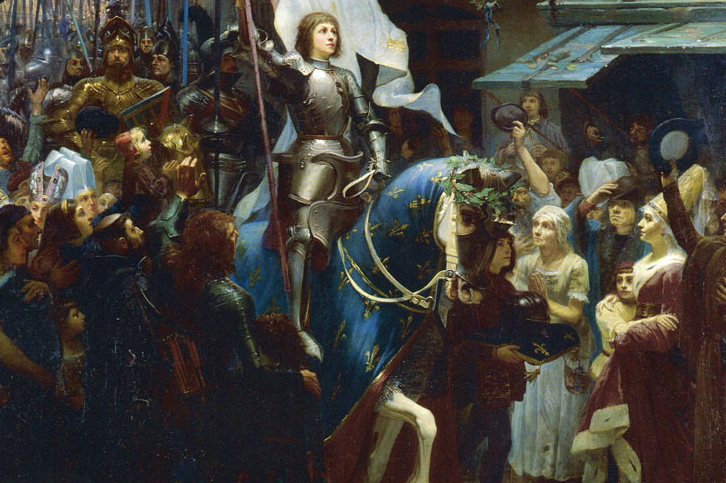 Jean-Jacques Scherrer, Wikimedia Commons
Jean-Jacques Scherrer, Wikimedia Commons
The Defeat Of The Spanish Armada: Securing England’s Naval Dominance
The Spanish Armada, the so-called "Invincible Armada," set sail in 1588 under the command of the Duke of Medina Sidonia, aiming to overthrow Queen Elizabeth I and restore Catholicism in England. Despite being heavily armed and prepared for a grand invasion, the Spanish fleet was outmaneuvered by the faster, more agile English ships and ultimately scattered by clever tactics and bad weather. The once-mighty fleet limped home with heavy losses, marking a turning point in European naval power and securing England's position as a dominant sea force for years to come.
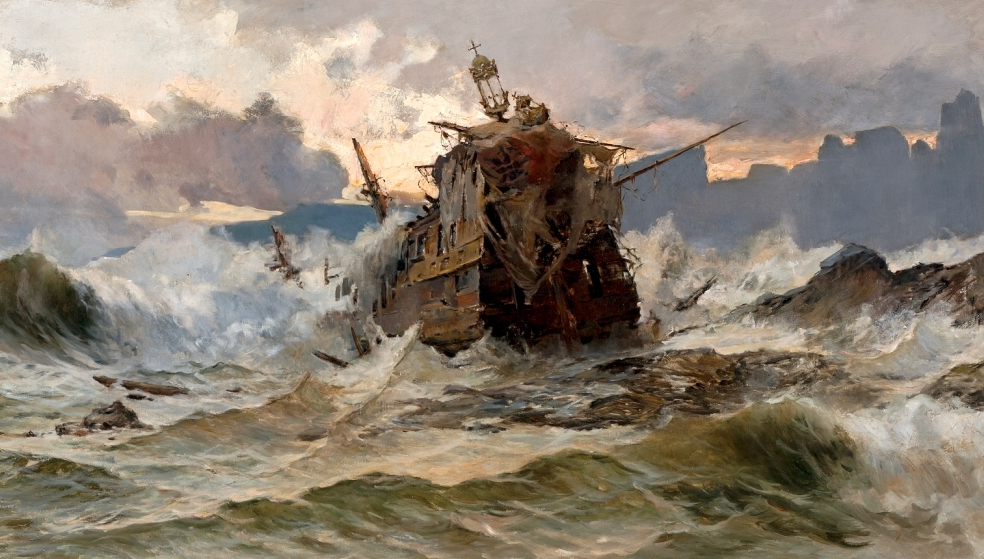 Jose Gartner, Wikimedia Commons
Jose Gartner, Wikimedia Commons
The Battle Of Blenheim: Checking French Ambitions In Europe
In 1704, the War of the Spanish Succession saw France aiming to dominate Europe. At the Battle of Blenheim, the Duke of Marlborough and Prince Eugene of Savoy led the Allies against the French. The Allies' decisive victory shattered the myth of French invincibility and derailed Louis XIV's grand ambitions. Without Blenheim, we might be saying "Bonjour" in a lot more places today!
 Pieter van Bloemen, Wikimedia Commons
Pieter van Bloemen, Wikimedia Commons
Battle Of Poltava: The Rise Of The Russian Empire
The Battle of Poltava on July 8, 1709, was the showdown that ended Sweden's dominance in Europe and marked Russia's rise as a major power. Tsar Peter the Great led the Russian forces to a decisive victory over King Charles XII's Swedish army. This battle not only spelled the end for the Swedish Empire but also set the stage for Russia's future influence in European affairs.
 Aleksey Kivshenko, Wikimedia Commons
Aleksey Kivshenko, Wikimedia Commons
The Battle Of Saratoga: The Turning Point In The American Revolution
The Battles of Saratoga in September and October 1777 were pivotal in the American Revolutionary struggle. American forces under General Horatio Gates and Benedict Arnold defeated British General John Burgoyne's army. Burgoyne's surrender on October 17, 1777, marked the engagement's first significant American victory. This victory convinced France to join the battle on the American side, reshaping the conflict's trajectory.
 John Trumbull, Wikimedia Commons
John Trumbull, Wikimedia Commons
The Battle Of Valmy: The French Revolution’s First Victory
In 1792, during the French Revolution, the French scored a surprising victory at the Battle of Valmy against the Prussians. This victory not only boosted French morale but also strengthened the revolutionary government. It marked the start of a new kind of engagement based on ideas rather than monarchy. The revolution was just heating up!
 Horace Vernet, Wikimedia Commons
Horace Vernet, Wikimedia Commons
Napoleon’s Last Stand: The Battle Of Waterloo
Napoleon Bonaparte—love him or hate him, there’s no denying the man knew how to fight a battle. But at Waterloo in 1815, his luck finally ran out. Facing a coalition of British, Prussian, and other forces, Napoleon fought hard to preserve his empire. However, the coalition's superior numbers and the timely arrival of the Prussians sealed his fate. Waterloo marked the end of an era and reshaped Europe's political landscape.
 Jacques-Louis David, Wikimedia Commons
Jacques-Louis David, Wikimedia Commons
The Battle Of Gettysburg: The High Water Mark Of The Confederacy
Fought from July 1 to July 3, 1863, the Battle of Gettysburg was the turning point of the American uprising. It was the bloodiest battle, with over 50,000 casualties. Union forces under Major General George Meade repelled Confederate General Robert E Lee's second invasion of the North. The failed Confederate assault known as Pickett's Charge led to a significant Union victory.
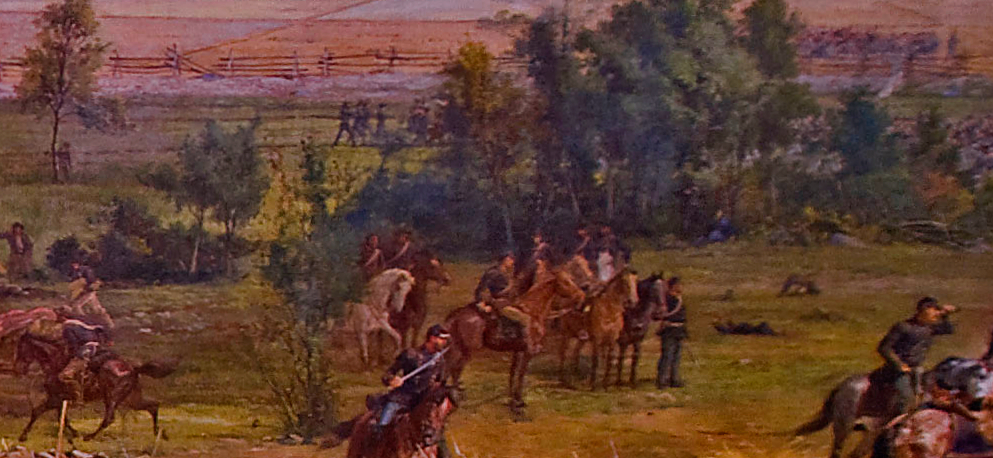 Ron Cogswell, CC BY 2.0, Wikimedia Commons
Ron Cogswell, CC BY 2.0, Wikimedia Commons
The Battle Of Sedan: The Fall Of The Second French Empire
The Battle of Sedan in 1870, during the Franco-Prussian battle, saw the decisive defeat of the French army by Prussian forces. This battle saw the capture of Emperor Napoleon III and led to the fall of the Second French Empire. It paved the way for Germany's unification under Prussian leadership, significantly altering Europe's power dynamics.
 Wilhelm Camphausen, Wikimedia Commons
Wilhelm Camphausen, Wikimedia Commons
The Battle Of Tsushima: Japan's Emergence As A World Power
The Battle of Tsushima in 1905, during the Russo-Japanese conflict, marked Japan's emergence as a major infantry power. Admiral Tōgō Heihachirō led the Japanese navy to a decisive victory over the Russian fleet. This victory was not just tactical; it signaled a major shift in global power dynamics, establishing Japan as a formidable force.
 Tōjō Shōtarō, Wikimedia Commons
Tōjō Shōtarō, Wikimedia Commons
The Battle Of Midway: The Turning Point In The Pacific Theater
The Battle of Midway, from June 4–7, 1942, was a pivotal moment in WWII's Pacific Theater. The US Navy dealt a devastating impact to the previously unstoppable Japanese navy by sinking four aircraft carriers. This victory halted Japanese expansion and shifted the engagement momentum in favor of the Allies.
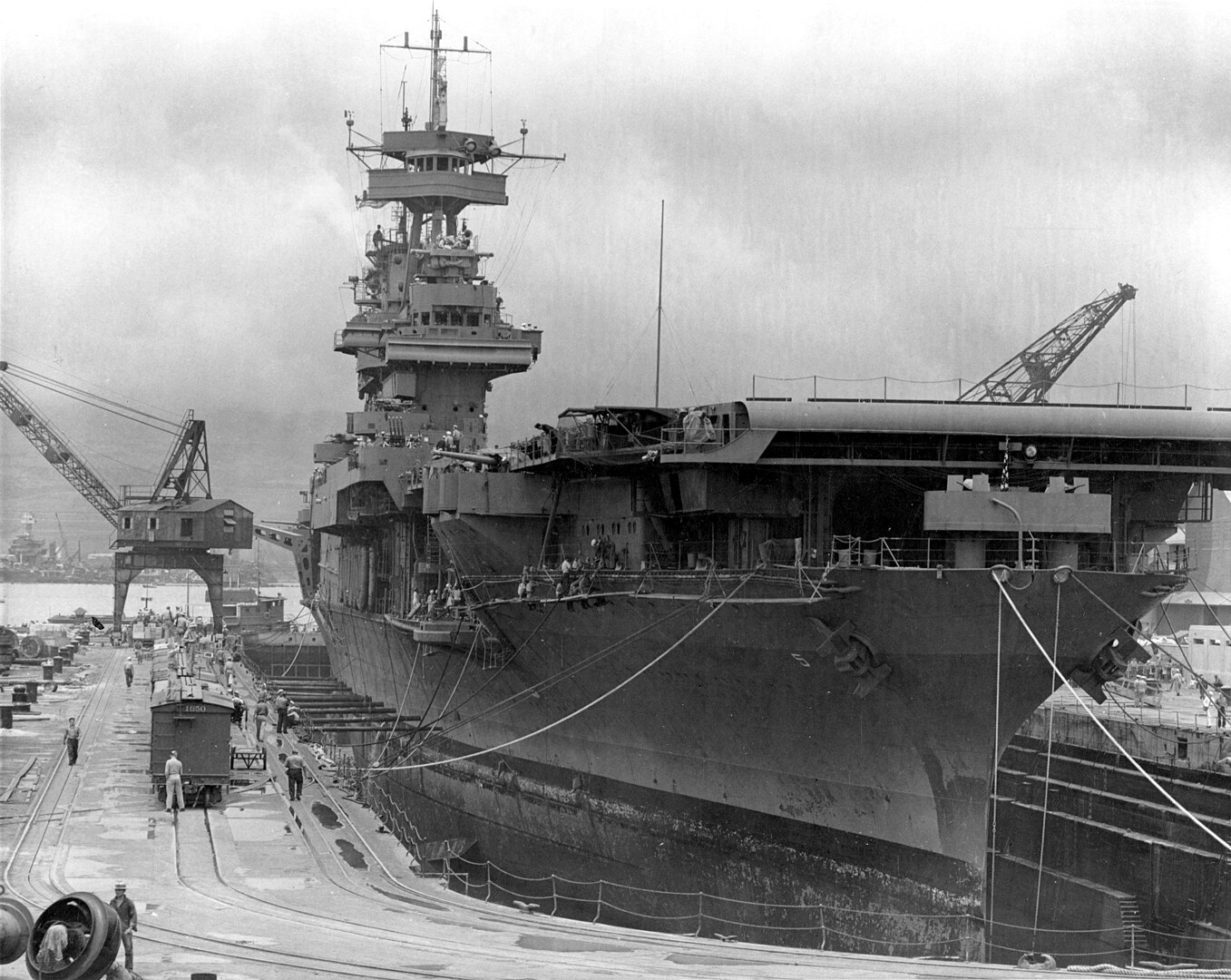 Naval History & Heritage Command, Wikimedia Commons
Naval History & Heritage Command, Wikimedia Commons
The Battle Of Stalingrad: The Defeat Of Third Reich Germany In The East
The Battle of Stalingrad from 1942–1943 was the brutal turning point on the Eastern Front of WWII. Despite horrific conditions, Soviet forces repelled and eventually encircled and defeated the German 6th Army. This defeat was not just a legion loss for Germany; it signaled the beginning of the end for the Third Reich.
 Unknown Author, Wikimedia Commons
Unknown Author, Wikimedia Commons
Battle Of Zama: Scipio Vs Hannibal In The Second Punic War
In 202 BC, the Battle of Zama presented a monumental clash between Hannibal Barca, Carthage’s legendary general, and Scipio Africanus, Rome’s tactical genius. The intense skirmish, complete with battle elephants and strategic maneuvering, ended with Scipio’s triumphant victory. This decisive moment not only concluded the Second Punic conflict but also cemented Rome’s supremacy over the Mediterranean and signaled the beginning of Carthage’s decline.
![]() José Luiz Bernardes Ribeiro, CC BY-SA 4.0, Wikimedia Commons
José Luiz Bernardes Ribeiro, CC BY-SA 4.0, Wikimedia Commons
The Battle Of Actium: The End Of The Roman Republic
The Battle of Actium in 31 BC was a pivotal naval confrontation that determined the fate of Rome itself. Mark Antony and Cleopatra faced off against Octavian—the future Augustus Caesar—in a dramatic clash that ended with Octavian’s overwhelming victory. This battle not only secured Octavian's rise to power but also marked the transition from the Roman Republic to the Roman Empire, ushering in a new era of imperial governance.
 Laureys a Castro, Wikimedia Commons
Laureys a Castro, Wikimedia Commons
The Battle Of Adrianople: The Beginning Of The End For Rome
On August 9, 378 AD, the Battle of Adrianople was a catastrophic defeat for the Eastern Roman Empire. Emperor Valens and his legions were decisively beaten by Gothic rebels in a battle that spelled disaster for Rome. The overwhelming defeat and the demise of Emperor Valens marked a critical turning point, showcasing the vulnerabilities of Roman infantry power and foreshadowing the eventual decline of the Western Empire.
 After Eduard Bendemann, Wikimedia Commons
After Eduard Bendemann, Wikimedia Commons
The Battle Of Lepanto: A Defining Moment In The Mediterranean
The Battle of Lepanto, fought on October 7, 1571, was a crucial naval engagement where the Holy League, a coalition of Venetian and Spanish forces, clashed with the mighty Ottoman navy. This fierce battle not only halted the Ottoman expansion into Europe but also sparked a renaissance in naval engagement and arts within Europe. It remains a defining moment that shaped the course of Mediterranean history.
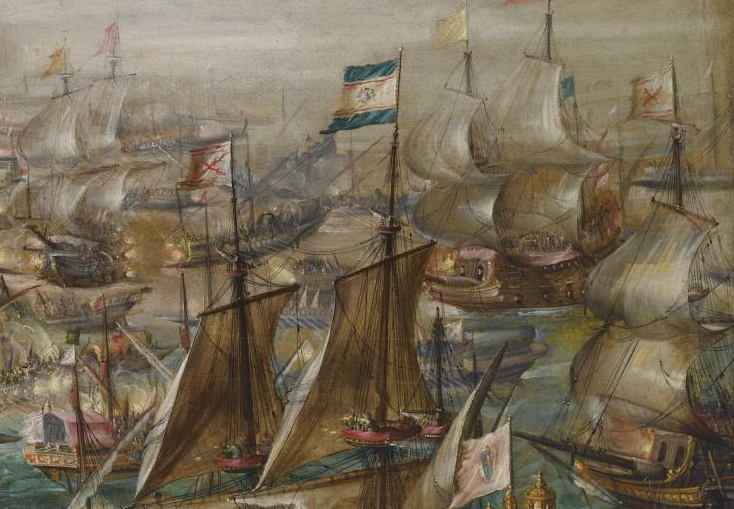 Andries van Eertvelt, Wikimedia Commons
Andries van Eertvelt, Wikimedia Commons
The Battle Of The Plains Of Abraham: The Fate Of North America
In 1759, the future of North America was shaped by the Battle of the Plains of Abraham, near Quebec City. British forces, under General James Wolfe, engaged the French under Marquis de Montcalm in a short but pivotal battle. Both commanders perished, but the British victory led to the fall of Quebec and the eventual end of French colonial ambitions in North America. This battle crucially influenced the cultural and political landscape of the continent.
 Hervey Smyth, Wikimedia Commons
Hervey Smyth, Wikimedia Commons
The Battle Of Valcour Island: The Revolutionary Battle On The Waters
The Battle of Valcour Island, fought on October 11, 1776, was an early naval engagement of the American Revolutionary conflict. Benedict Arnold commanded a small fleet of American ships against a superior British force on Lake Champlain. Despite the American defeat, Arnold’s delaying tactics were vital, providing crucial time for the American forces to prepare for future engagements, which significantly impacted the engagement’s outcome.
 Royal Collection, Wikimedia Commons
Royal Collection, Wikimedia Commons
The First Battle Of The Marne: Stopping The German Advance In WWI
In September 1914, the First Battle of the Marne marked a significant early turning point in WWI. The Allied forces, comprising French and British units, managed to halt the rapid German advance towards Paris. This critical encounter led to a strategic retreat by the German forces and thwarted their plans for a quick and decisive victory, setting the stage for the prolonged trench engagement that came to define the Western Front.
 Unknown Author, Wikimedia Commons
Unknown Author, Wikimedia Commons
The Vicksburg Campaign: Dividing The Confederacy
The Vicksburg Campaign, culminating in July 1863, was a masterful series of maneuvers and engagements led by Union General Ulysses S Grant. The capture of Vicksburg split the Confederacy, gave the Union control of the Mississippi River, and was pivotal in determining the outcome of the American civil conflict. Grant’s victory at Vicksburg not only solidified his reputation but also proved to be a turning point in the clash.
 Unknown Author. Wikimedia Commons
Unknown Author. Wikimedia Commons
The Battle Of Sadowa: The Unification Of Germany Begins
The Battle of Königgrätz (also known as Sadowa), on July 3, 1866, was the decisive engagement of the Austro-Prussian conflict. Under the strategic command of Helmuth von Moltke, Prussian forces overcame the Austrians, leading to Prussian dominance in Germany and setting the stage for the unification of Germany under Prussian leadership. This battle was instrumental in shifting the balance of power in Central Europe.
 Conrad Freyberg, Wikimedia Commons
Conrad Freyberg, Wikimedia Commons
The Tet Offensive: The Turning Point In The Vietnam Conflict
The Tet Offensive, launched in January 1968 by North Vietnamese forces, was a major escalation in the Vietnam conflict. Though militarily unsuccessful, the widespread attacks had profound psychological impacts, significantly altering US public opinion and leading to increased opposition to the conflict. This marked a crucial turning point, as it diminished US public support and led to a reevaluation of US defense forces involvement in Vietnam.
 U.S. Marine Corps., Wikimedia Commons
U.S. Marine Corps., Wikimedia Commons
The Battle Of Megiddo: The First Recorded Battle In History
The Battle of Megiddo, fought in the 15th century BC, is one of the earliest recorded legion conflicts. Egyptian forces under Pharaoh Thutmose III defeated a coalition of Canaanite kings in a battle that demonstrated strategic defense forces planning and execution. Megiddo set the stage for the rise of the New Kingdom of Egypt and left a lasting imprint on regiment history.
 Olaf Tausch, CC BY 3.0, Wikimedia Commons
Olaf Tausch, CC BY 3.0, Wikimedia Commons
The Battle Of The Somme: The Bloodiest Battle Of WWI
The Battle of the Somme, fought from July to November 1916, was one of the largest and bloodiest battles of WWI. With over a million men wounded or slain, it epitomized the brutal trench campaign that characterized the conflict. The introduction of tanks and the massive loss of life at the Somme profoundly affected both battalion tactics and public perception of the engagement.
 John Warwick Brooke, Wikimedia Commons
John Warwick Brooke, Wikimedia Commons
The Battle Of Hastings: The Foundation Of Modern England
The Battle of Hastings, on October 14, 1066, was a pivotal moment in English history. William the Conqueror, Duke of Normandy, defeated King Harold II, leading to the Norman conquest of England. This battle fundamentally transformed the English culture, language, and authorized system, laying the foundation for modern English society.
 12th century, Wikimedia Commons
12th century, Wikimedia Commons
The Battle Of Moscow: The First Major Defeat Of Third Reich Germany
The Battle of Moscow, spanning from October 1941 to January 1942, was a pivotal moment where the Soviet Red Army halted the Führer's invasion. Despite severe winter conditions and being outnumbered, the Soviets defended their capital ferociously, forcing the Germans into a debilitating retreat. This marked not only a crucial defense of Moscow but also the first significant defeat of the Third Reich battle machine during WWII.
 Mark Markov-Greenberg, Wikimedia Commons
Mark Markov-Greenberg, Wikimedia Commons
The Second Battle Of El Alamein: The Turning Point In The North African Campaign
Fought from October 23 to November 11, 1942, the Second Battle of El Alamein was a decisive turning point in the Western Desert Campaign of WWII. British forces under General Montgomery launched a crucial offensive against Rommel's Axis units, driving them from Egypt and relieving the Axis insecurity to the Middle East. This victory significantly boosted Allied morale and marked the decline of Axis power in North Africa.
 Zwilling, Ernst A., CC-BY-SA 3.0, Wikimedia Commons
Zwilling, Ernst A., CC-BY-SA 3.0, Wikimedia Commons
The Battle Of Kursk: The Largest Tank Battle In History
The Battle of Kursk, in July 1943, stood as one of history's largest and most ferocious tank battles. German forces launched a massive offensive which was met with staunch resistance and strategic countermeasures by the Soviets. Despite being heavily outmatched, Soviet resilience and tactical superiority turned the tide, resulting in a crucial victory that marked a significant turning point in WWII, showcasing the waning momentum of Third Reich aggression.
 Mil.ru, CC BY 4.0, Wikimedia Commons
Mil.ru, CC BY 4.0, Wikimedia Commons
The Battle Of Britain: Defending The Skies Of England
During 1940, the Battle of Britain was characterized by intense aerial combat as the British Royal Air Force (RAF) squared off against the German Luftwaffe. The goal was to achieve air superiority in preparation for a potential invasion. The RAF's determined defense resulted in the Führer's first major defeat, preventing the invasion of Britain and proving that the Führer’s army was not invincible.
 German Air Force photographer, Wikimedia Commons
German Air Force photographer, Wikimedia Commons
The Battle Of Manzikert: The Byzantine Empire’s Last Stand In Asia Minor
On August 26, 1071, the Battle of Manzikert was a catastrophic defeat for the Byzantine Empire at the hands of the Seljuk Turks. Emperor Romanos IV was captured, a humiliating impact that led to significant territorial losses in Anatolia. This defeat significantly weakened the Byzantine Empire, setting the stage for its gradual decline and the rise of Turkish influence in the region.
 Unknown Author, Wikimedia Commons
Unknown Author, Wikimedia Commons
The Siege Of Constantinople: The Fall Of The Eastern Roman Empire
The Fall of Constantinople in 1453 marked a profound and historic end to the Byzantine Empire as Ottoman forces, led by Sultan Mehmed II, captured the city after a relentless 55-day siege. The successful use of cannons to breach the once impregnable Theodosian Walls marked a turning point in combat history and heralded the rise of the Ottoman Empire as a major power in both Europe and Asia.
The Battle Of Vienna: Defending Europe From Ottoman Conquest
In 1683, the Battle of Vienna marked a critical juncture in European history as it halted the westward expansion of the Ottoman Empire. A coalition of European forces, famously led by King John III Sobieski, managed to lift the siege of Vienna with a dramatic cavalry charge. This victory was pivotal in stabilizing Central European borders and began the gradual decline of Ottoman influence in Europe.
 Jan Matejko, Wikimedia Commons
Jan Matejko, Wikimedia Commons

